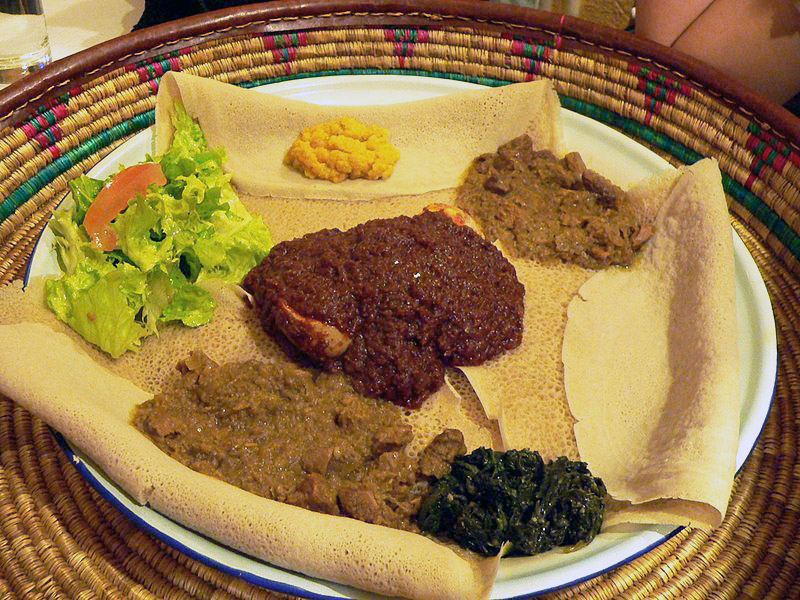Injera, the Traditional Ethiopian Bread
Teff is a special type of millet, which is grown in Ethiopia. Teff grows fast and is very nutritious. The millet is ground to flour, of which injera is made of. This authentic recipe for injera requires planning ahead a few days. The batter, which solely consists of ground teff and water, must ferment prior to cooking. Preparation time is the fermentation time.

What you need:
- 1 1⁄2 cups ground teff
- 2 cups water
- salt, to taste
- vegetable oil, for the skillet
How you make it:
1. Mix ground teff with the water and let stand in a bowl covered with a dish towel at room temperature until it bubbles and has turned sour; This may take as long as 3 days, although I had success with an overnight fermentation; The fermenting mixture should be the consistency of a very thin pancake batter
2. Stir in the salt, a little at a time, until you can barely detect its taste.
3. Lightly oil an 8 or 9 inch skillet and heat over medium heat.
4. Pour in enough batter to cover the bottom of the skillet; About 1/4 cup will make a thin pancake covering the surface of an 8 inch skillet if you spread the batter around immediately by turning and rotating the skillet in the air; This is the classic French method for very thin crepes; Injera is not supposed to be paper thin so you should use a bit more batter than you would for crepes, but less than you would for a flapjack pancakes.
4. Cook briefly, until holes form in the injera and the edges lift from the pan; Do not let it brown, and don't flip it over as it is only supposed to be cooked on one side.
5. Remove and let cool. Place foil between successive pieces so they don't stick together.
Injera is not just a bread, it also serves as knifes and forks. To serve, lay one injera on a plate and ladle your chosen dishes on top e.g., a vegetable or chicken stew. Guests can be instructed to eat their meal without utensils, instead using the injera to scoop up their food.

